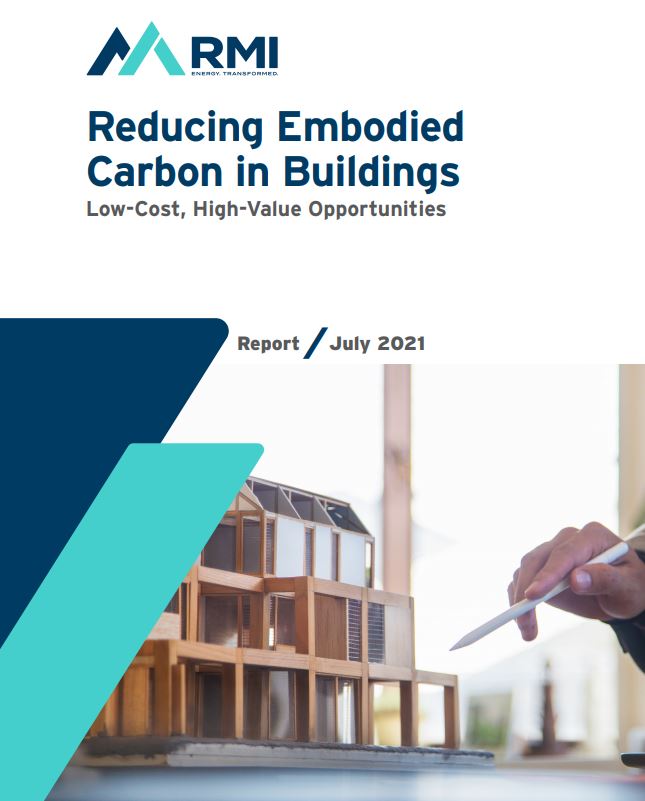Low-Cost, High-Value Opportunities Report, July 2021
Authors
Rebecca Esau, Matt Jungclaus, Victor Olgyay, Audrey Rempher. Authors listed alphabetically. All authors from RMI unless otherwise noted.
Contacts
Buildings account for at least 39% of energy-related global carbon emissions on an annual basis. At least one-quarter of these emissions result from embodied carbon, or the carbon emissions associated with building materials and construction. The solutions for addressing embodied carbon in buildings have not been widely studied in the United States, leaving a significant knowledge gap for engineers, architects, contractors, policymakers, and building owners.
Embodied carbon can be reduced significantly at little to no additional up-front cost. The case studies showcased in this report show an embodied carbon savings potential of 24%–46% at cost premiums of less than 1%. Current practice indicates that we can achieve these reductions by specifying and substituting material alternatives with lower embodied carbon during the design and specification process. Far greater reductions are possible when a whole-building design approach is taken.
This report highlights the low-cost and no-cost solutions for reducing embodied carbon in buildings by studying three building types and considering design strategies that can reduce embodied carbon at any stage of a project’s design and construction phases. The report quantifies the construction cost difference associated with low-embodied-carbon solutions and points to next-generation solutions that could drive even greater reductions.
Key Takeaways
- Up-front embodied carbon can be reduced by up to 46% in our case study building typologies with less than 1% cost premium.
- Optimizing ready-mix concrete design, choosing finish materials with low-embodied-carbon footprints, and considering low-embodied-carbon or carbon-sequestering insulation options are the most impactful no-cost measures for reducing embodied carbon.
- Designing for minimal material usage can reduce embodied carbon, lower up-front costs, and maintain a building’s sound structure and aesthetics.
- Sourcing rebar and structural steel with higher recycled content, choosing low-embodied-carbon glazing products, and reducing structural system material needs are the most impactful low-cost measures.
- Currently emerging materials promise to significantly further reduce embodied impacts.
